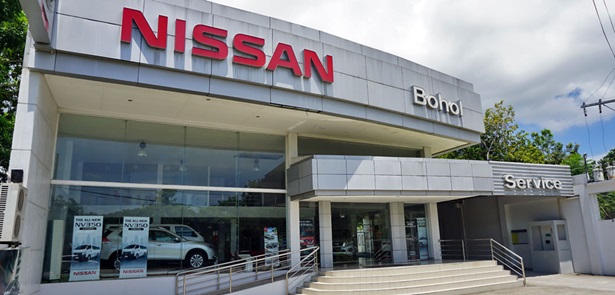
Tagbilaran has fast grown into a car capital with an average of 100 brand new vehicles released by a company per month.
Although in the outskirt of Cebu’s urban skyscrapers, Tagbilaran brags of the rough estimate of around 5,000-6,000 brand new cars released in a year from the off-Manila branches of Hyundai, Ford, Toyota, Isuzu, and Suzuki that the city hosts along the same stretch of CPG North Avenue.
Car company agents, in general, attributed the increase of sales to the huge cut in the down payment and modern detail designs that came almost simultaneously in 2015 and 2016.
In addition, Yamaha, Suzuki and Honda outlets have also maintained the fast sales in motorcycles, especially since the release of scooter models.
Even with the market command of brand new car outlets, second-hand vehicle outlets managed to compete.
Tagbilaran City Mayor John Geesnell Yap earlier admitted the volume of cars released to the streets everyday challenges the traffic management office, considering that even new car owners from the towns come to the city for transactions.
Other factors, although marked in minority of the population, include frustrations in the service of public utility vehicles as to the increase in sales of private vehicles.
Another factor is the improvement of the living conditions of the populace as a number of new professionals chose to settle in Bohol.
The mayor also cited, on the other hand, the improved business climate in the city brought in more investors who opened additional livelihood.
The city government had also made a daring deviation from the previous administration’s off-road agenda on tourism.
The city’s new direction towards tourism attracted more visitors that opened doors to new investors in the tourist transport industry.
Investment on the tourist transport added to the sales of car and motorcycle outlets.
Noticing the volume of new cars released to the streets everyday, the city government immediately formulated measures to address the problem on parking spaces.
Yap also reminded motorists that the City Traffic Management Office continues to implement the clamping ordinance.
CTMO Chief Tony Samante, who used to be assigned at the traffic division of the Tagbilaran City Police Station before retiring, warned that they had already started the strict implementation of traffic rules as years of leeway must have been enough for drivers of both public utility vehicles and private vehicles to return the favor this time.
The CTMO also eyes penalties for jay-walking to unmindful pedestrians who had contributed to the traffic problems.
The CTMO earlier explained that reflectors must be installed first on the streets to guide both the pedestrians and motorists.
The city government put up new traffic lights with countdown timers last year to ease traffic choke areas.
The CTMO believes that the countdown timers help ease traffic flow as they give the motorists the idea how much time is left “before the light changesâ€.
It also gives hints to the pedestrians how much time left for them to cross the roads.
Samante, however, suggested that the city ordinance designating parking areas along roads must be amended in such a way it should be identified which are for motorcycles and which are those for four-wheeled vehicles.
On the other hand, the rising number of road accidents involving motorcycles prompted the Highway Patrol Group (HPG) of the PNP to consider the resumption of the implementation of the Helmet Law.
The HPG noticed that in most cases, the motorcycle riders without helmets died.
In Tagbilaran City, the HPG hesitated at first because of the ordinance prohibiting full-face helmets or any material that covers the face in public places.
The city mayor, however, explained to the HPG that the ordinance only allows law enforcers to flag down motorists wearing any material that covers their identity.
It is only intended to know the identity of the motorist and not to penalize for wearing full-face helmet.
The city ordinance was intended to curb the spate of killings involving riding in tandem, the mayor added.Â
